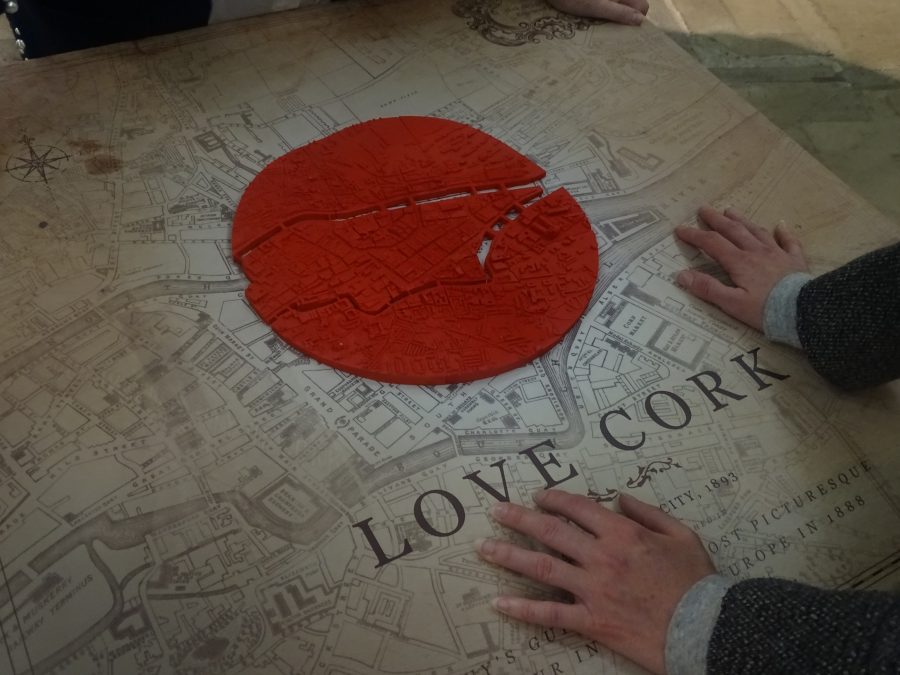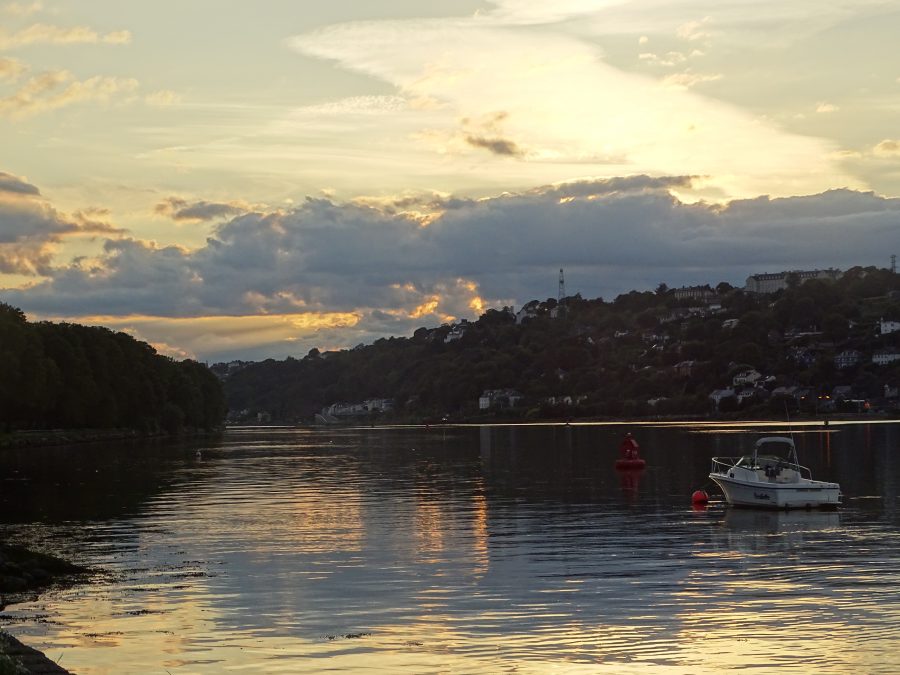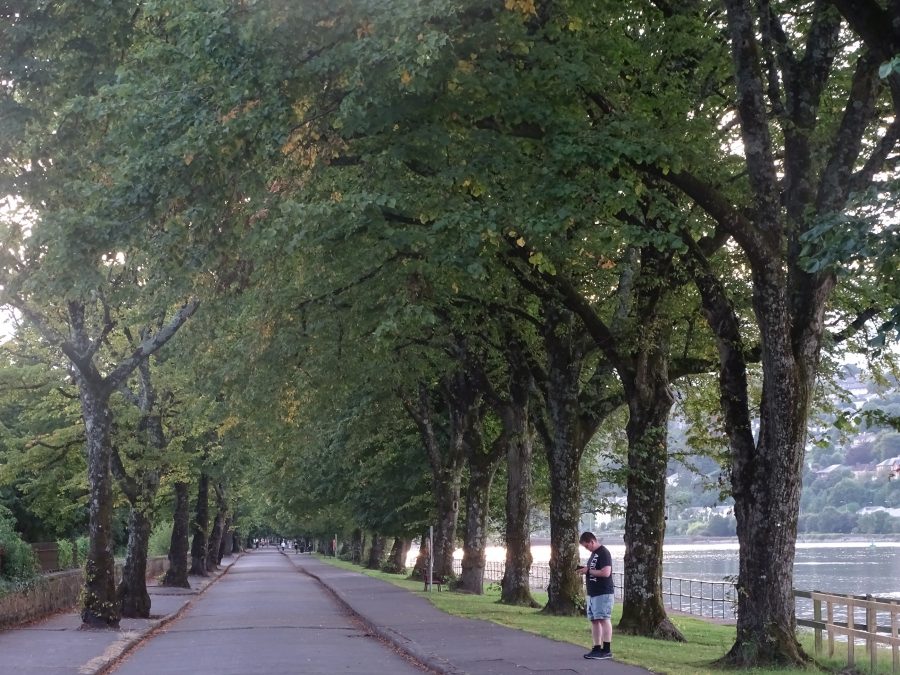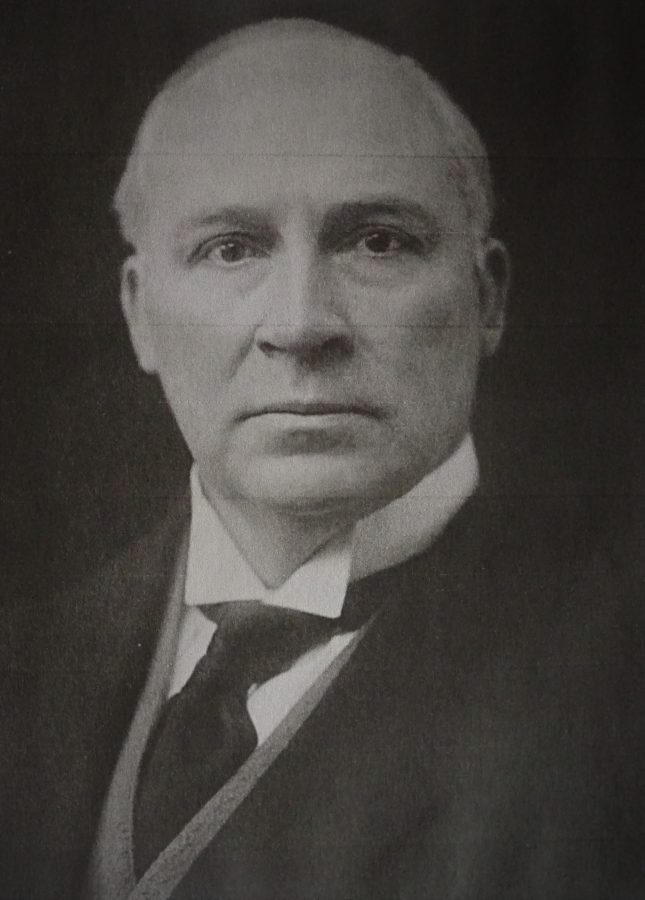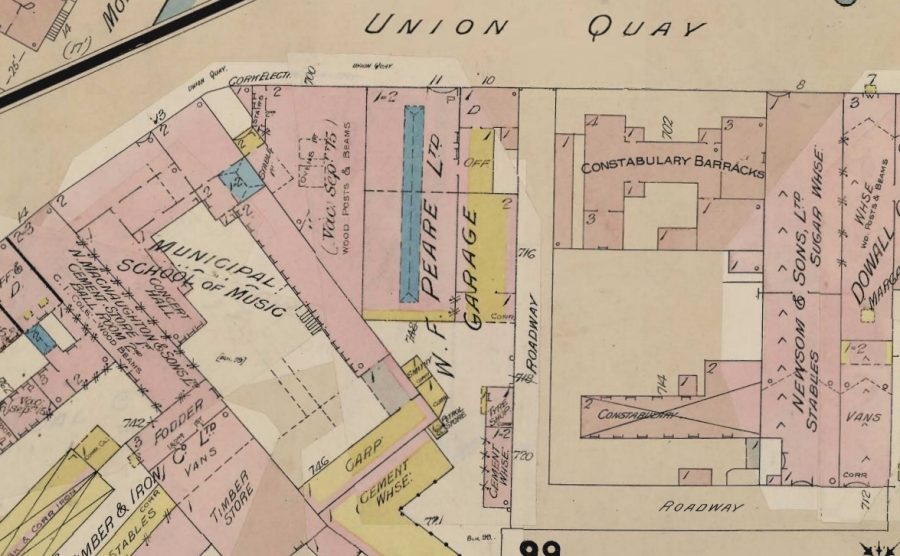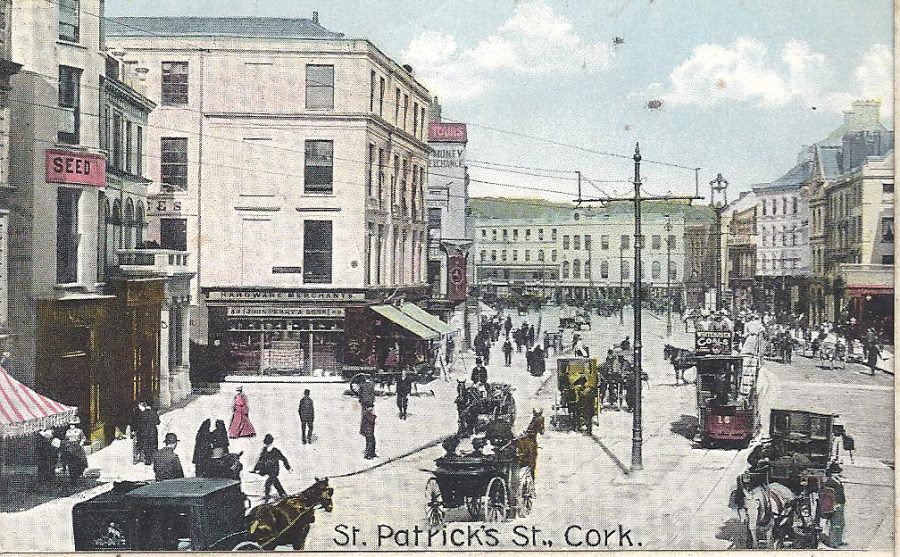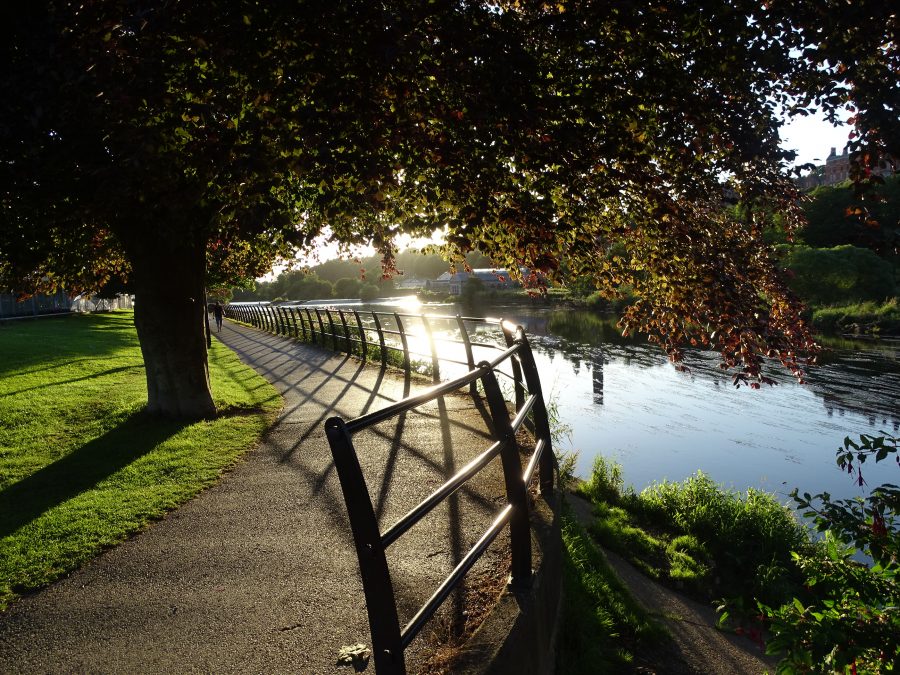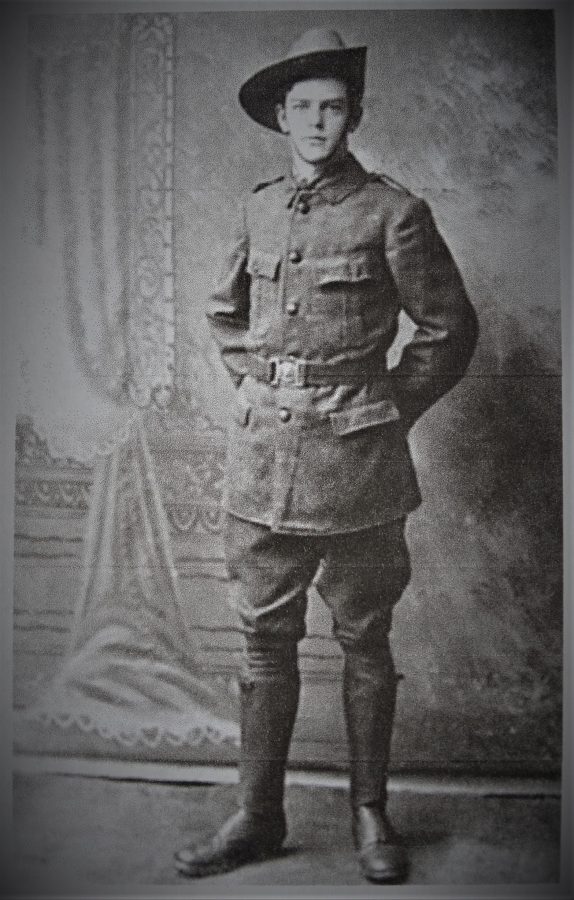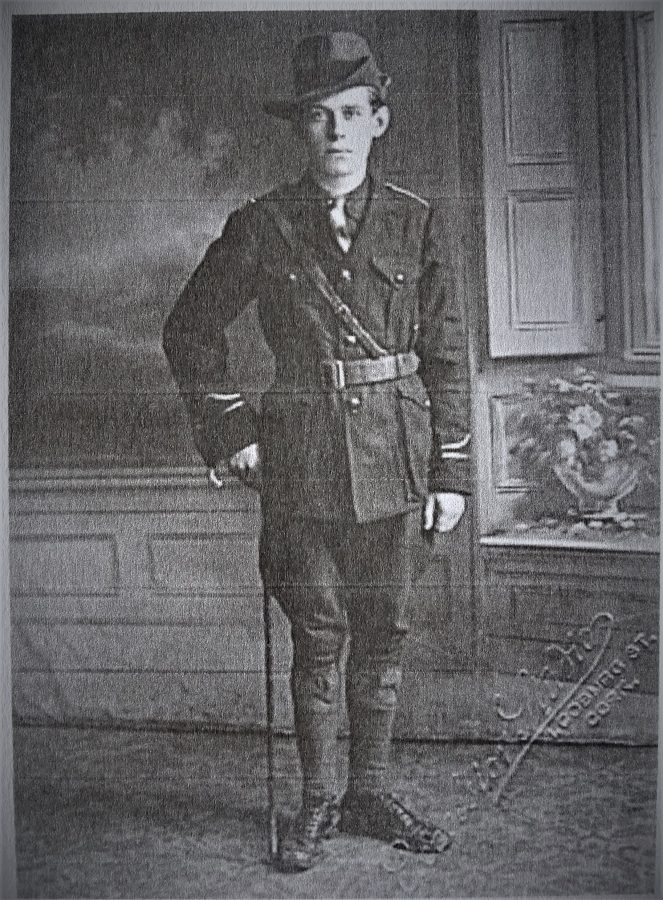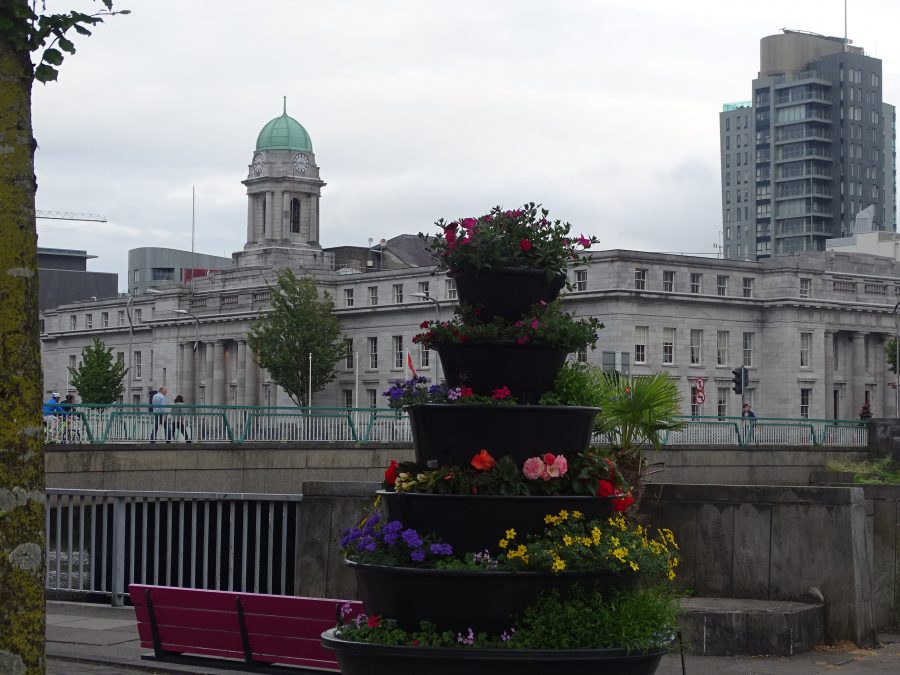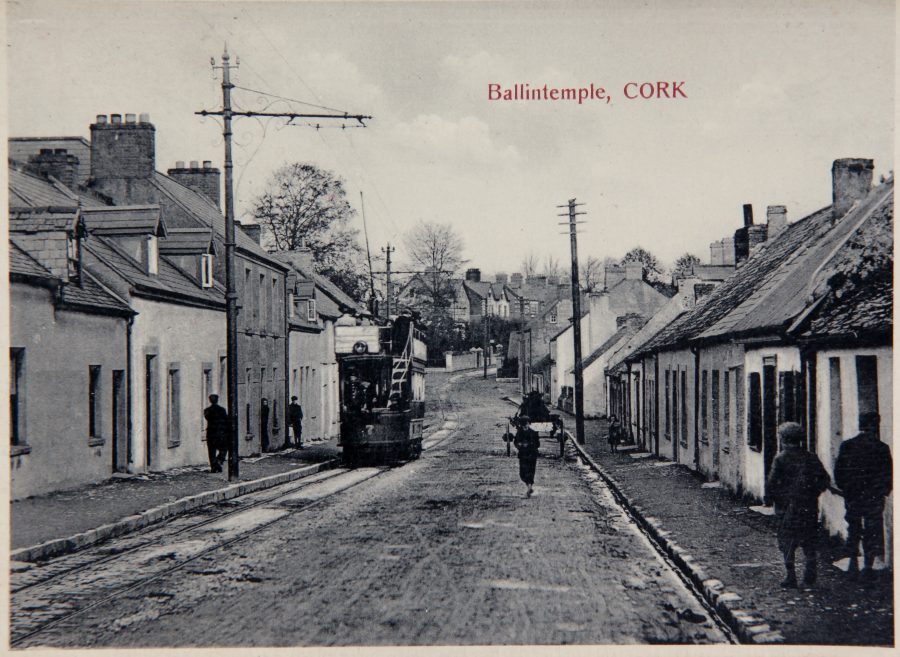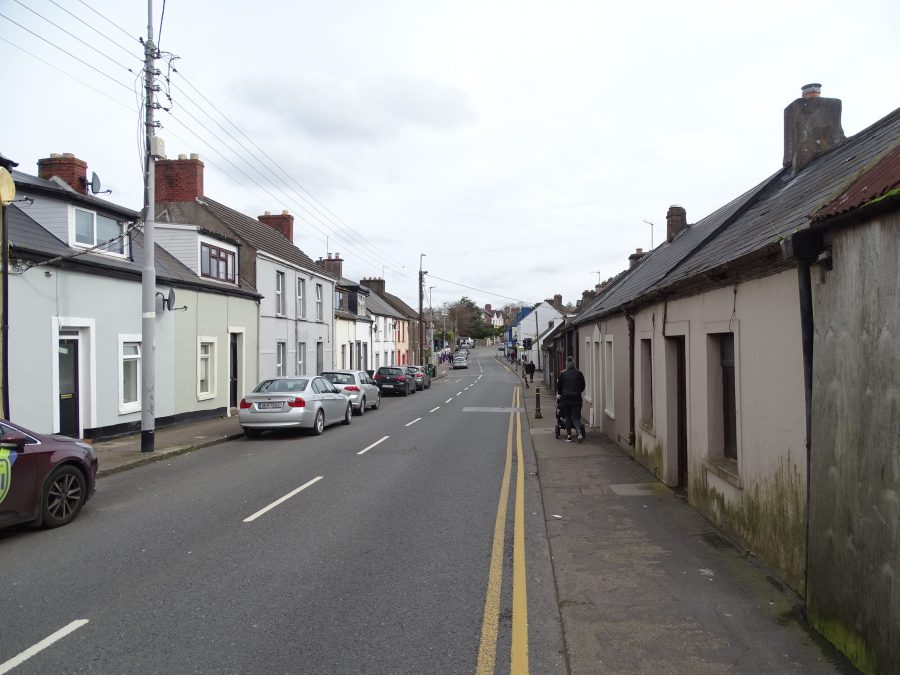
1061a. Lord Mayor Terence MacSwiney, Spring/ Summer 1920 (source: British Pathé).
Kieran’s Our City, Our Town Article,
Cork Independent, 13 August 2020
Remembering 1920: The Arrest of Terence MacSwiney
The military activities in and around Cork City Centre for early August 1920 culminated with a raid on the old City Hall on the Thursday 12 August 1920 and the arrest of Lord Mayor Cllr Terence MacSwiney and other prominent Sinn Féin members. They were meeting generally on Cork Brigade No.1 plans and adjudicating at the Sinn Féin courts or acting as officers thereof. Upstairs in the Council Chamber and Committee Room, courts were about to start and several litigants, including many women with children were in the building. Members of six families in a tenement were present to contest their landlord seeking possession.
The Cork Examiner reports that a large military party in two lorries came over Clontarf Bridge and disembarked near City Hall, which they immediately surrounded. All passerbys were arrested. But in a very short time a large crowd had assembled in Anglesea Street, along Albert Quay and Lapp’s Quay, and even on the South Mall. Traffic was stopped. When the City Hall was surrounded the soldiers entered the building with rifles and fixed bayonets and a search commenced. Considerable emotion ensued as women and children fled from the encroaching soldiers into the darkening corridors of City Hall. The ante-room off the Council Chamber got the most attention. Here it was known that Gaelic League classes were held regularly and it was also the office of the Dáil Éireann courts. Presses and desks were minutely searched and some papers were taken away.
One of those arrested in City Hall was Michael Leahy, Officer in Command of the Fourth Battalion (East Cork) of Brigade No.1. In his interview within the Bureau of Military History (WS1421), he relates he was present by accident as he was looking to speak with Florence O’Donoghue to plan an assassination of a RIC Sergeant in Cobh. At City Hall earlier in the day of the 12 August, Terence MacSwiney told him that there was to be a meeting of the senior officers of the Cork brigades that evening in City Hall, about 8pm. Although Michael only ranked as a battalion commandant at the time, Terence ordered Michael to stay and attend the meeting. In the main hall of the City Hall the Republican Court was in progress while their meeting was on.
In his witness statement Michael Leahy recalls just some of those present at 8pm – Seán Hegarty, Vice-Officer in Command; Joseph O’Connor Brigade Quarter Master, Dan Donovan, Officer in Command of 1st Battalion, Florence O’Donoghue, Brigade Intelligence Officer, Dom Sullivan, Brigade Adjutant, Liam Deasy, officer in Command of Cork No.3 Brigade, and Mick Murphy, Officer in Command, 2nd Batallion Cork City.
The 8pm group meeting was not very long in session when word was brought that the military had surrounded the building and had begun searching it. Michael relates: “We left the room and made for a concealed exit to a hiding place somewhere between the ceiling and the roof. I remember a key to this hideout being missing and Terry MacSwiney sending someone to another room to get it. The soldiers, meantime, were getting closer to where we were, so it was decided to get out into the back yard and the work-shops to the rear of the City Hall”. In the hope of getting away in that direction, Michael went to climb a gate out of the yard when a bullet, fired by a soldier in the laneway outside, whizzed past his head. He jumped back into the yard. He now realised that escape was impossible, so the group got into one of the carpenter’s workshops where they were captured by the military.
The dozen arrested Brigade members were conveyed in three military lorries to Victoria Barracks. The Lord Mayor was in the first lorry with three of the others. They were surrounded with soldiers with fixed bayonets and each side of the lorry was lined with soldiers having their rifles ready for combat. Similar conditions were seen in the other two lorries.
The following day at the detention barracks section Michael Leahy relates that eleven of the group gave false names when questioned, with the exception of Terence MacSwiney, who gave his correct name and title of “Lord Mayor of Cork”. They were kept in Cork detention barracks for a day when they went on hunger strike. This was pursued in solidarity to over 60 IRA men who were on hunger strikes in Cork County Gaol, off Western Road.
The twelve were then transferred to the military barracks, where they were again interrogated by military intelligence officers. There they denied having any connection with the IRA or Sinn Féin. After five days in the barracks, Michael and his group were surprised to learn that they were to be released with the exception of Terence MacSwiney.
The eleven in number could scarcely credit their good fortune on being released and they lost no time in getting out of the city. Not two hours after they had left the barracks, a most intensive round-up took place in the city. Thousands of soldiers were engaged searching every conceivable building. It was Michael’s firm belief that the British military intelligence was so poor at the time and that, with the exception of Terence MacSwiney, who was a well-known public man, the military had no idea as to who the prisoners really were. Terence was not so fortunate. He was charged with sedition having an RIC cipher in his possession and documents relating to Dáil Éireann. He was sentenced to two years in prison. Terence was transferred to Brixton Prison in England. Within hours he began his hunger strike, which was to last 74 days before his eventual death.
A virtual Cork Heritage Open Day takes place on 15 August 2020. Check out the various short films on buildings and online talks throughout the day, www.corkheritageopenday.ie. Details of Kieran’s events for Heritage Week 2020 are online under Kieran’s Heritage Events at www.corkheritage.ie. These include a lunchtime webinar on Saturday 15 August and a lunchtime heritage treasure hunt along the City’s historic bridges on Saturday 22 August.
Captions:
1061a. Lord Mayor Terence MacSwiney, Spring/ Summer 1920 (source: British Pathé).
1061b. Lord Mayor Terence MacSwiney, Spring/ Summer 1920 (source: British Pathé).

1061b. Lord Mayor Terence MacSwiney, Spring/ Summer 1920 (source: British Pathé).
